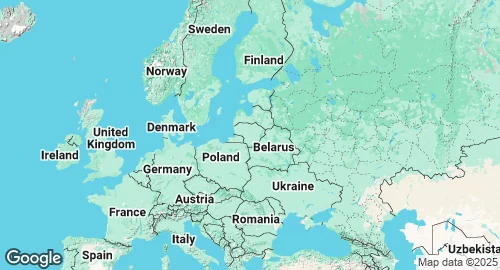Lithuania Military Forces 🇱🇹
Military Strength Overview
| 🛩️ Air Force | 9 active aircraft |
| 🪖 Active Troops | 19,850 personnels |
| ⛑️ Reserve Troops | 6,700 personnels |
| 👮♀️ Paramilitary | 14,400 personnels |
| 🗺️ Air bases | 1 active air bases |
| 🎖️ Military ranks | 59 ranks listed |
Defense Statistics & Key Metrics
| Population | 2.9 million (2023) |
| GDP | $79.8 billion (2023) |
| GDP per capita | $27786 (2023) |
| Military Budget | $2.6 billion (2024) |
| Share of GDP in Milex | 3.1% (2024) |
| Share of Govt Expenditures | 7.9% (2024) |
| Military spends per capita | $917 (2024) |
| Inflation Rate | 0.72% (2024) |
| Military Personnel | 37,000 (2020) |
Strategic Overview in 2025
Lithuania's defense posture is overwhelmingly shaped by its geographic proximity to Russia and Belarus. As a frontline NATO and EU member, its strategic priority is the deterrence of and defense against potential Russian aggression. This is formalized in its national security strategy, which is based on a concept of "total and unconditional defense" in conjunction with collective defense commitments under NATO's Article 5. The security environment has prompted a significant increase in defense spending and a strengthening of national security measures. A key element of this posture is hosting a multinational NATO Enhanced Forward Presence (eFP) battlegroup, led by Germany, which serves as a tangible link to the broader alliance. Furthermore, Lithuania collaborates closely with Latvia and Estonia on regional security initiatives, such as joint defense infrastructure on their borders with Russia and Belarus.
Military Forces and Capabilities
The Lithuanian Armed Forces are undergoing a rapid modernization and expansion. Active personnel number around 20,000, supported by a growing reserve force. Conscription, reintroduced in 2015, is being expanded to bolster manpower and form a larger active reserve. The Land Forces form the core of the military and are being restructured with the creation of a new infantry division.
Significant investments are being made to upgrade equipment. This includes the acquisition of advanced Western hardware such as Leopard 2 main battle tanks, Boxer infantry fighting vehicles (known locally as Vilkas), PzH 2000 self-propelled howitzers, and HIMARS rocket artillery systems. The Air Force operates without fighter jets, relying on the NATO Baltic Air Policing mission for air defense, a mission to which it provides host nation support. The Navy is small and focused on coastal patrol, mine countermeasures, and search and rescue operations. Lithuanian Special Operations Forces are highly regarded and have gained valuable experience in international missions.
Strategic Trends and Future Outlook
Lithuania's defense trajectory is defined by a steep increase in military expenditure, with a commitment to sustain 3% of GDP and potentially aiming for as high as 5.5% in the coming years. A national defense development program for 2024-2030 aims to enhance capabilities, including the permanent hosting of a German brigade and the establishment of a national division to implement total defense policies. The defense strategy emphasizes societal resilience, integrating civilian institutions, the private sector, and citizens into the national defense framework. The development of a domestic defense industry, particularly in areas like military drones, is also a stated priority.
The primary challenge for Lithuania remains the significant military disparity with Russia. Its strategy is not to defeat a major power single-handedly but to mount a credible defense that would impose high costs on an aggressor and provide time for NATO allies to intervene. The success of this strategy hinges on continued domestic investment, societal preparedness, and the unwavering commitment of its NATO partners.
Lithuanian Military Budget History
Population and Military Personnel Trends
GDP and Inflation Rate Trends
Military Expenditure: SIPRI Milex.
